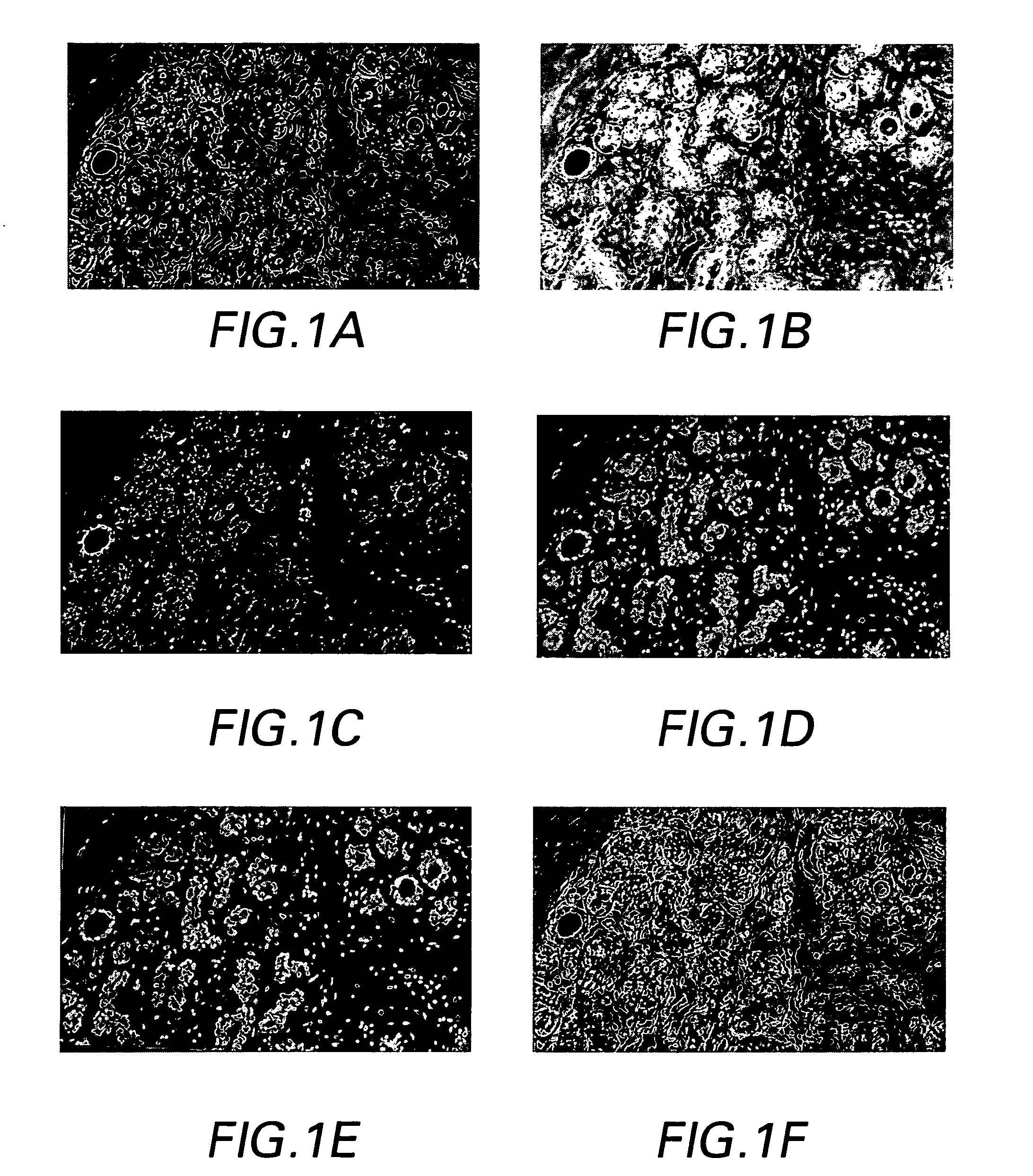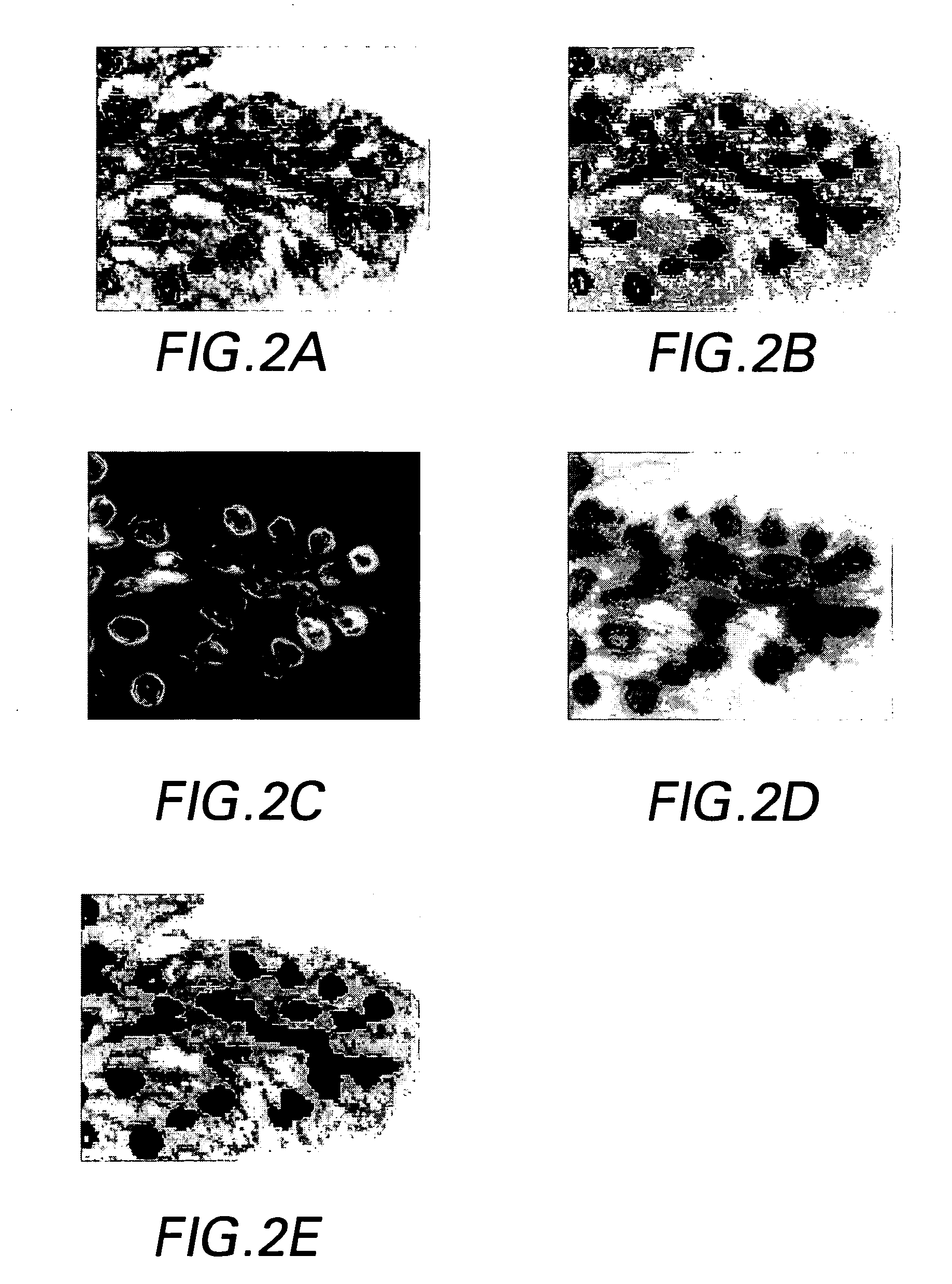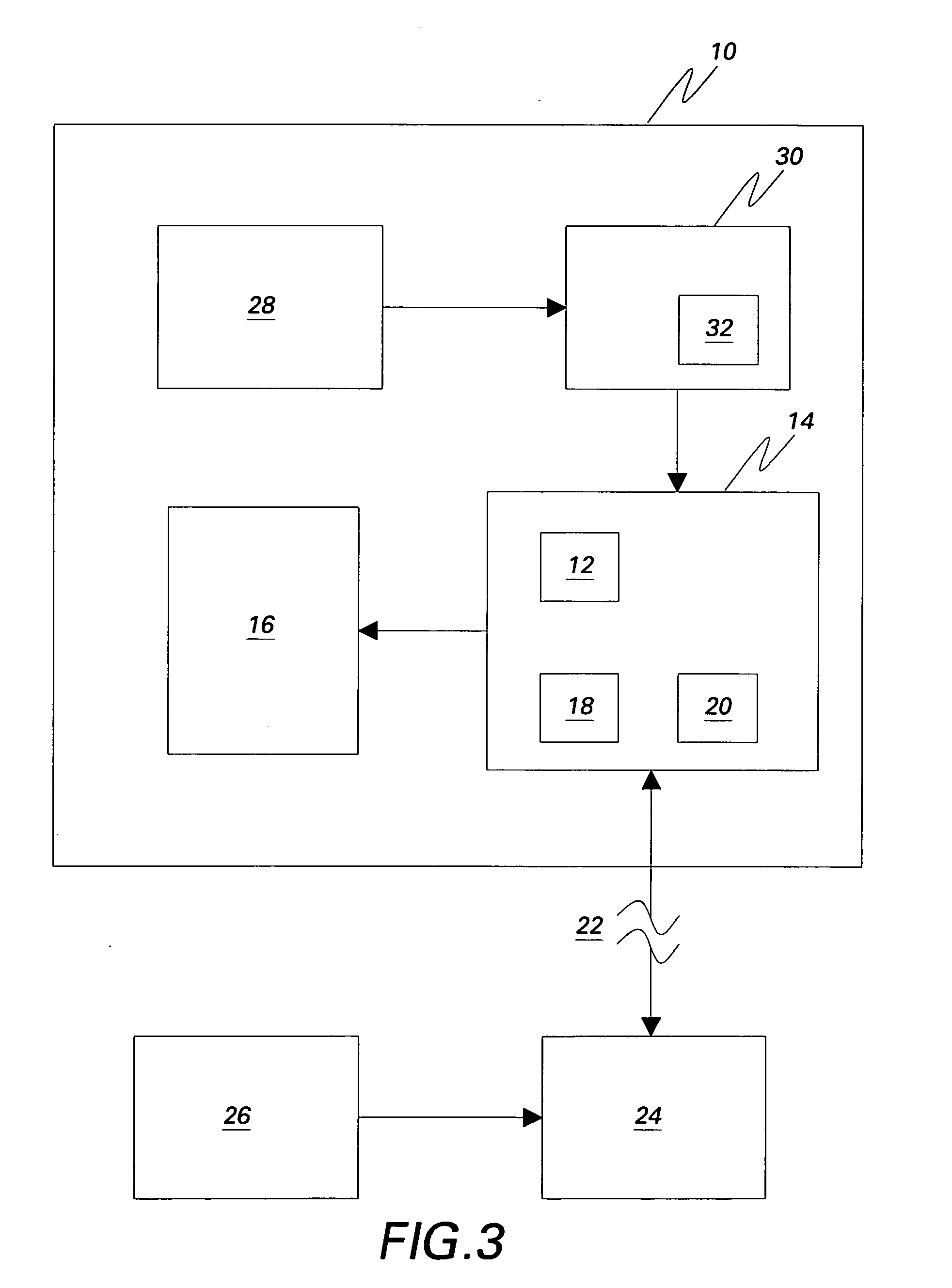System and method for co-registering multi-channel images of a tissue micro array
a multi-channel image and tissue technology, applied in the field of tissue micro array processing and imaging, can solve the problems of inconsistent and inconclusive, tma fails to incorporate differences between serial images, and the effort is less than optimal, so as to achieve the effect of greatly improving image analysis techniques
- Summary
- Abstract
- Description
- Claims
- Application Information
AI Technical Summary
Benefits of technology
Problems solved by technology
Method used
Image
Examples
Embodiment Construction
[0030]The preferred methods and preferred embodiments of system of the invention allow both molecular and morphological markers to be imaged from the same tissue sample using sequential imaging and co-registration techniques. Generally, the tissue, which is fixed or otherwise provided on a substrate such as, but not limited to, a TMA, a slide, a well, or a grid, is labeled with molecular biomarkers, and imaged through a fluorescent microscope. Then the tissue is re-labeled with one or more morphological stains such as H&E dyes, and imaged again. The methods are not limited to two images and can be adapted to co-register more than two images as needed. The images are overlaid using both hardware and software registration techniques, and the information is merged, whereby the technical effect is to co-register or otherwise produce multi-channel images. Every pixel in the multi-channel image represents both molecular and H&E information. This multi-channel registered image can be used ...
PUM
| Property | Measurement | Unit |
|---|---|---|
| fluorescent | aaaaa | aaaaa |
| structure | aaaaa | aaaaa |
| morphological structures | aaaaa | aaaaa |
Abstract
Description
Claims
Application Information
 Login to View More
Login to View More - R&D
- Intellectual Property
- Life Sciences
- Materials
- Tech Scout
- Unparalleled Data Quality
- Higher Quality Content
- 60% Fewer Hallucinations
Browse by: Latest US Patents, China's latest patents, Technical Efficacy Thesaurus, Application Domain, Technology Topic, Popular Technical Reports.
© 2025 PatSnap. All rights reserved.Legal|Privacy policy|Modern Slavery Act Transparency Statement|Sitemap|About US| Contact US: help@patsnap.com



